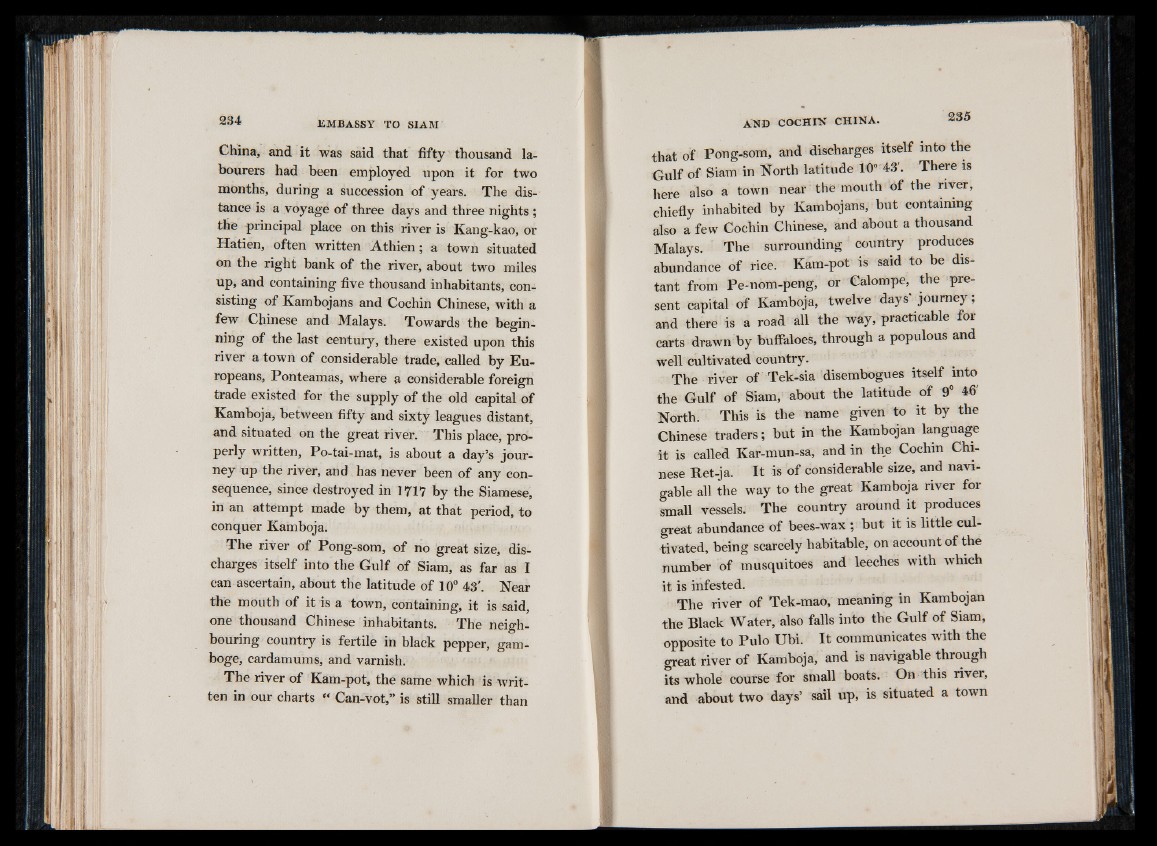
China, and it was said that fifty thousand labourers
had been employed upon it for two
months, during a succession of years. The distance
is a voyage of three days and three nights ;
the principal place on this river is Kang-kao, or
Hatien, often written A th ien ; a town situated
on the right bank of the river, about two miles
up, and containing five thousand inhabitants, consisting
of Kambojans and Cochin Chinese, with a
few Chinese and Malays. Towards the beginning
of the last century, there existed upon this
river a town of considerable trade, called by E u ropeans,
Ponteamas, where a considerable foreign
trade existed for the supply of the old capital of
Kamboja, between fifty and sixty leagues distant,
and situated on the great river. This place, properly
written, Po-tai-mat, is about a day’s journey
up the river, and | has never been of any consequence,
since destroyed in 1717 by the Siamese,
in an attempt made by them, at that period, to
conquer Kamboja.
The river of Pong-som, of no great size, discharges
itself into the Gulf of Siam, as far as I
can ascertain, about the latitude of 10° 43'. Near
the mouth of it is a town, containing, it is said,
one thousand Chinese inhabitants. The neighbouring
country is fertile in black pepper, gamboge,
cardamums, and varnish.
The river of Kam-pot, the same which is written
in our charts “ Can-vot,” is still smaller than
that of Pong-som, and discharges itself into the
Gulf of Siam in North latitude 10° 43'. There is
here also a town near the mouth of the river,
chiefly inhabited by Kambojans, but containing
also a few Cochin Chinese, and about a thousand
Malays. The surrounding country produces
abundance of rice. Kam-pot is said to be distant
from Pe-nom-peng, or Calompe, the present
capital of Kamboja, twelve d ay s'jo u rn ey ;
and there is a road all the way, practicable for
carts drawn by buffaloes, through a populous and
well cultivated country.
The river o f T e k - s ia disembogues itself into
the Gulf of Siam,1 about the latitude of 9° 46'
North. This is the name given to it by the
Chinese traders; but in the Kambojan language
i t is called Kar-mun-sa, and in the Cochin Chinese
Ret-ja. I t is of considerable size, and navigable
all the way to the great Kamboja river for
small vessels. The country around it produces
great abundance of bees-wax ; but it is little cultivated,
being scarcely habitable, on account of the
number of musquitoes and leeches with which
it is infested.
The river of Tek-mao, meaning in Kambojan
the Black Water, also falls into the Gulf of Siam,
opposite to Pulo Ubi. I t communicates with the
great river of Kamboja, and is navigable through
its whole course for small boats. On this river,
and about two days’ sail up, is situated a town